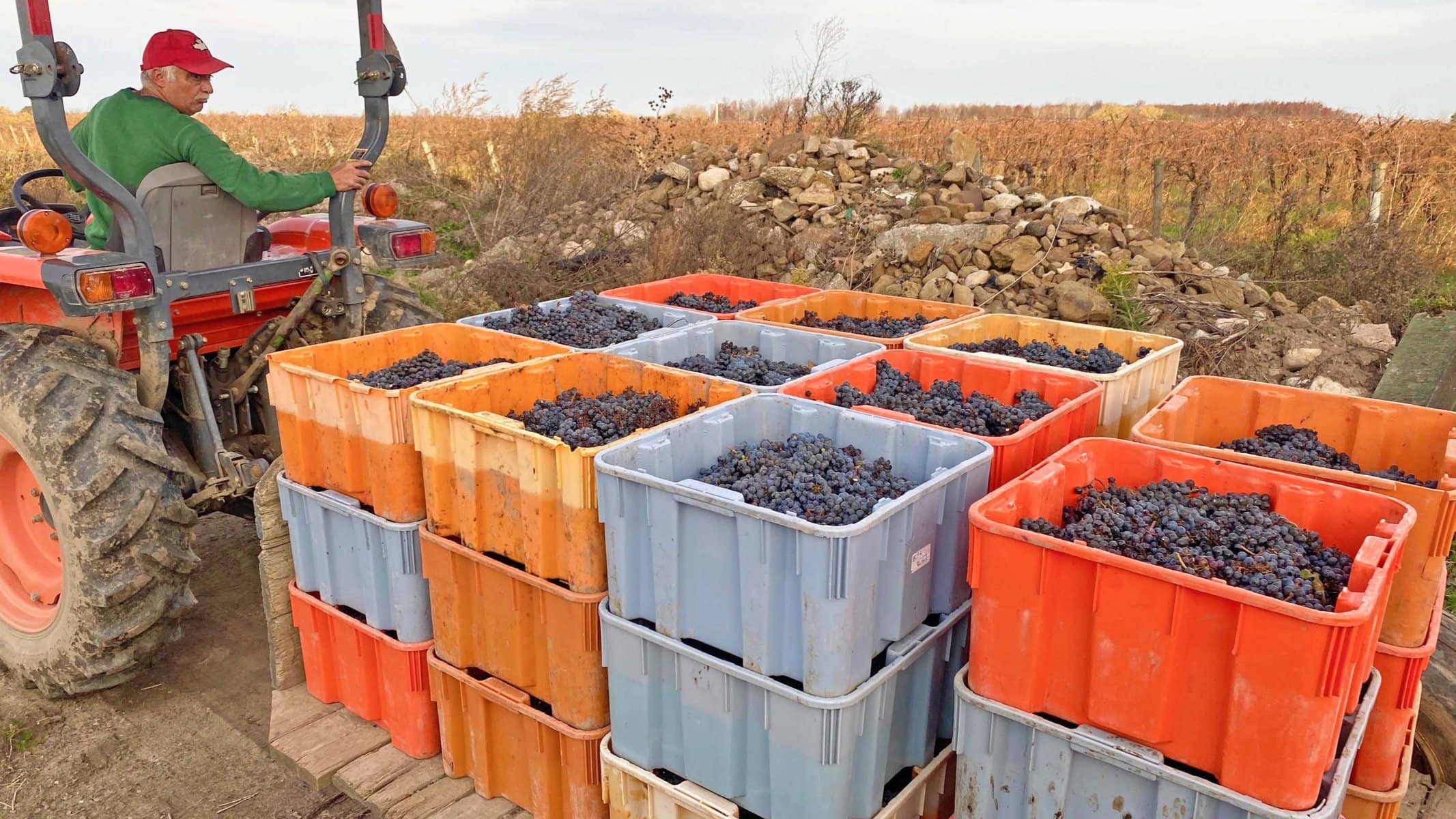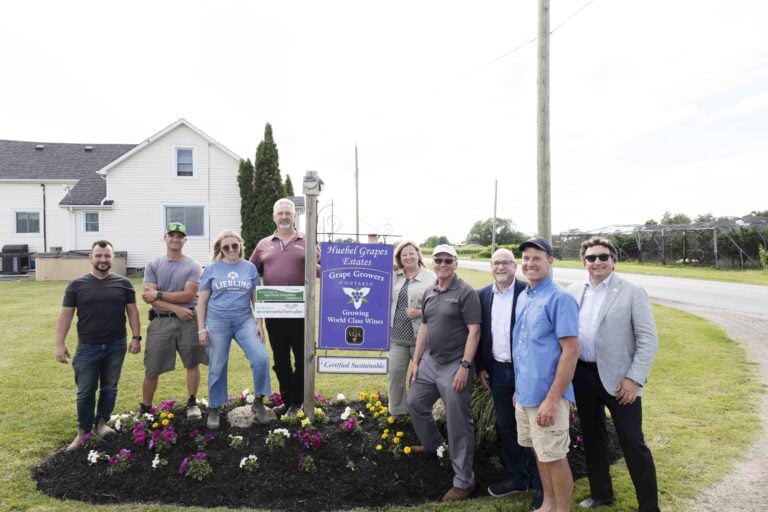Marynissen winemaker Mitchell McCurdy waits for the right time to harvest old vine Cabernet Sauvignon
Long after the Chardonnay and Riesling, the Gamay Noir and even Cabernet Franc grapes have been picked, one varietal lingers on the vine, soaking up the last of the season’s heat and sunshine.
Cabernet Sauvignon grapes are the last to come in and at Marynissen Estate Winery, one of the youngest winemakers in NOTL has been patiently playing a waiting game for the right time to harvest the grapes from the oldest commercial Cabernet Sauvignon vines in Ontario.
The vines were planted in 1978, 16 years before Marynissen’s winemaker Mitchell McCurdy was even born. McCurdy is now 28 and the vines are a venerable 44 years old.
When McCurdy checked on the grapes back at the end of September, he was pleased with what he found.
“I’m really happy with them. We have beautiful clusters, with no rot, no worries,” he said at the time.
“We had a normal spring after a very cold winter and we got to 25 degrees almost immediately after bud break in May. Our ideal temperatures for growing days are 25 to 35 Celsius, and the more the better,” he said.
The true test of ripeness comes in tasting the grapes.
“These grapes right now are very fruity, but the skins are still tannic so they’re underripe. The seeds are still greenish and we want them to turn brownish,” he explained.
“In two weeks I could pick them to make a tasty rosé, but I don’t want to do that. We’re getting to good blue fruit flavours. We’ll leave these on the vine, so the flavour develops, acids drop and sugar accumulates,” he said.
McCurdy’s wish on that day was for October weather that would bring “cool nights and some warm sun in the day. If we’re below 15 degrees at night it keeps disease pressure down.”
October delivered on that wish, but November brought foggy days and warmer nights.
“I was confident about the quality of the grapes, but then we had some fears because of that thick fog that settled in, and the warmer nights that went with it, because that could increase disease pressure,” McCurdy said.
“The grapes were still in very good shape going into that time, and the heat and sunshine we had during the day helped them ripen further,” he added.
“The last two weeks on the vines were all about reduction of acids, which will give us a more ripe flavour and less tart acidity” in the wine, he said.
So on a sunny Saturday morning in November, the time at last had come.
“Even two weeks ago the grapes were quite ripe, but now the tannins have softened. The grapes taste very fruit-forward, which is excellent,” he said.
“We opted for hand harvesting, because if we used a machine to harvest we’d likely get too much MOG (material other than grapes) because of the leaves breaking down. It only took 90 minutes, since we only have two acres of Cabernet Sauvignon, and the acre of old vines is sparse.”
Sparse, because the vineyard suffers from attrition.
“With these old vines, we want to maintain the integrity of the wine we make from them, so we don’t interplant. Where vines have died, we leave the gap,” McCurdy said.
That attrition, plus winter damage and hungry birds, have conspired to ensure the yield is low, but the quality is excellent.
“The grapes are in and they’re tasty and ripe. I’m very happy.”
“On pick day it was 20 degrees, which is perfect, so we were ready to rock. We inoculated (with yeast) that same day and fermentation got going.”
This is just McCurdy’s fourth vintage as winemaker at Marynissen.
“I’ve always liked wine and I love using science to make delicious beverages. It’s a blend of art and science,” he said.
McCurdy studied oenology at Brock University and “fell in love with wine and winemaking,” he recalled.
It was only later he learned that his mother had roots in the wine industry, dating back a decade before he was born.
“She worked for Labatt in the early ’80s, which owned Chateau-Gai then. She worked in research and development, which Allan Jackson (later to co-found Jackson-Triggs) was in charge of,” he said.
She trucked grapes for the research facility from Niagara to London, making small batches and trying different techniques. “Shortly after that, she worked at Chateau-Gai in a quality-control lab,” he said.
Back at Marynissen on Concession 1 Road, once fermentation of the 2022 Cabernet Sauvignon is complete, the wine from the old vines will go into oak barrels to age for 18 months before bottling. It will be on the shelves in about two years.
When it is released, it will be under the label Heritage Collection Cabernet Sauvignon, Marynissen Vineyard. The wine will be made exclusively from fruit from the old vines and will be a small batch.
“There will only be 50 cases, so it’s very small,” McCurdy said.
The 2020 vintage from the old vines is available now, and according to McCurdy, “it’s pretty awesome. It has cool climate freshness with good body and delicious flavours. The old vines give a floral note.”
“There’s been talk about tearing those old vines out, but no decision yet. There’s historical significance there and they are still producing quality grapes,” said McCurdy.
“Sometimes we make uneconomical choices for the sake of quality.”










